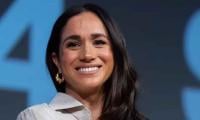German elections
The September 26 general elections in Germany have produced another hung parliament. Even though the Social Democrats emerged as the single largest party in parliament, it fell well short of the 369 seats required to win a simple majority to form government – winning with a narrow margin of just 10 seats.
The Social Democrats (SPD) have won 206 seats while the Conservative CDU/CSU won 196 seats in the house of 736. The Greens have won 118 seats, their best ever election performance. According to the official results released, the SPD won 25.7 percent of the vote; up 5.2 percent from the 2017 disastrous results when it bagged just 20 percent votes.
The CDU/CSU bagged 24.1 percent, and the Green Party with 14.8 percent of votes. The small business, free market Free Democrats (FDP) took 11.5 percent (up slightly from 2017). The turnout was 76.6 percent, up just 0.4 percent from 2017.
The real winners of this election are SPD and the Green Party as both increased their share of votes and seats. The SPD was trailing in third place a year ago. But in the last six months, it covered some ground and emerged as the largest party in the new parliament. The SPD has won (narrowly) because it gained the votes of many on the left. These voters will expect some changes: more and better public services; taxes on the rich; higher wages.
And within the SPD, there is a rising left-wing, particularly in the youth section, that wants action. SPD leader Scholz is going to find it difficult to meet the demands of his rank and file and stay in a coalition with the likes of the neoliberal Free Democrats (FDP).
The Greens’ success was the result of making the environmental concerns and economic worries of the voters as the central points of their campaign. It is clear that the momentum is moving more towards issues that concern social welfare, green politics for young voters.
The real losers of this election are the conservative Christian Democrats (CDU/CSU) and their candidate for chancellor, Armin Laschet. The CDU achieved its worst result in a federal election ever. It ended up with just 18.9 percent of the vote. With 5.2 percent, the CSU only just cleared the 5 percent hurdle. The CDU/CSU received 24.1 percent of the votes, a fall of 8.9 points.
The conservative bloc suffered heavy losses as the Angela Merkel era came to an end. They were down by almost 9 percent on the previous election and have had their worst result since 1949.
The other real loser of the election night is the leftist Die Linke. The Left Party suffered heavy losses as it dropped to just 4.9 percent, down from 9.2 percent in 2017. The Left Party’s big losses ruled out a possible SPD, Greens and Left Party coalition government. These three parties need six more members of parliament to form the majority government. It was a real setback for the left. It seems that many leftist voters switched to the SPD in order to defeat the CDU-CSU.
The anti-immigrant radical rightwing Alternative for Germany (AfD) also lost some ground, dropping 2.3 percent points, although it held its voter base in the poorer parts of Eastern Germany.
The share of the vote for the two major parties SPD and CDU/CSU has continued to fall in the last two decades. It fell further in this election as both parties got less than 50 percent of the vote for the first time. Both parties dominated German politics for decades before other smaller parties started to gain ground.
The fragmentation of German politics is not good news for the German ruling class. The two dominant parties were helpful for the capitalist class to ensure continuity to protect its political and economic interests. Now they have to rely on more than two political parties to defend their interests since coalition governments have become the new normal in Germany since the 2000s.
The SPD will now begin negotiations to form the new government, a process that could take weeks or even months. After Merkel's election win in September 2017, it took more than five months for a government to be formed. The Greens and FPD have become king makers after the close election. They can form a coalition with any of two big parties. The only way to keep both the Greens and the FPD out of the coalition government is to form a grand coalition of SPD and CDU/CSU.
There are three possible scenarios for the formation of the coalition government: i) SPD can form a coalition with the Greens and FPD (416 seats); ii) SPD can form a grand coalition with the CDU/CSU (402 seats); and iii) the Conservative CDU/CSU can also form a coalition with the Greens and FPD (410 seats). The other option might be to form a minority coalition of SPD, Greens and the Left Party (363 seats). Or for the CDU/CSU to form a coalition with the FPD and AFD (397 seats). But this coalition is unlikely because of the AFD's anti-immigration, anti-EU and anti-Muslim stance.
So it is most likely that the four parties will engage in intense debates and discussions to form the next coalition government.
The writer is a freelance journalist.
-
 Kate Middleton Is More Relaxed In 'Wellington Boots Than Diamond Tiara'
Kate Middleton Is More Relaxed In 'Wellington Boots Than Diamond Tiara' -
 Gaten Matarazzo Addresses Important Fans Query About 'Stranger Things'
Gaten Matarazzo Addresses Important Fans Query About 'Stranger Things' -
 Prince William's Latest Move Reveals Rift Is Strong With Prince Harry
Prince William's Latest Move Reveals Rift Is Strong With Prince Harry -
 Princess Eugenie Becomes Second Royal After Meghan To Feature In Viral Trend
Princess Eugenie Becomes Second Royal After Meghan To Feature In Viral Trend -
 Carol Burnett Sings Praises Of Late Jimmy Stewart: 'He Had THIS'
Carol Burnett Sings Praises Of Late Jimmy Stewart: 'He Had THIS' -
 Kate Middleton Dashes Through Rain At Windsor Castle
Kate Middleton Dashes Through Rain At Windsor Castle -
 Dave Filoni, Who Oversaw Pedro Pascal's 'The Mandalorian' Named President Of 'Star Wars' Studio Lucasfilm
Dave Filoni, Who Oversaw Pedro Pascal's 'The Mandalorian' Named President Of 'Star Wars' Studio Lucasfilm -
 Is Sean Penn Dating A Guy?
Is Sean Penn Dating A Guy? -
 Sebastian Stan's Godmother Gives Him New Title
Sebastian Stan's Godmother Gives Him New Title -
 Alison Arngrim Reflects On 'Little House On The Prairie' Audition For THIS Reason
Alison Arngrim Reflects On 'Little House On The Prairie' Audition For THIS Reason -
 Spencer Pratt Reflects On Rare Bond With Meryl Streep's Daughter
Spencer Pratt Reflects On Rare Bond With Meryl Streep's Daughter -
 'Stranger Things' Star Gaten Matarazzo Recalls Uncomfortable Situation
'Stranger Things' Star Gaten Matarazzo Recalls Uncomfortable Situation -
 Gaten Matarazzo On Unbreakable Bonds Of 'Stranger Things'
Gaten Matarazzo On Unbreakable Bonds Of 'Stranger Things' -
 Beyonce, Jay-Z's Daughter Blue Ivy Carter's Massive Fortune Taking Shape At 14?
Beyonce, Jay-Z's Daughter Blue Ivy Carter's Massive Fortune Taking Shape At 14? -
 Meghan Markle Fulfills Fan Wish As She Joins Viral 2106 Trend
Meghan Markle Fulfills Fan Wish As She Joins Viral 2106 Trend -
 Selena Gomez Proves Point With New Makeup-free Selfie On Social Media
Selena Gomez Proves Point With New Makeup-free Selfie On Social Media



